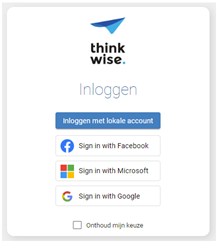Once again I started enthusiastically with the implementation of new functionality, but it turned out to be a disappointment...
We consider to use OpenID as an authentication method for Thinkwise Applications.

I thought it would be easy to set this up. But I stopped again because the documentation is not a simple example to find. It is probably possible to configure this in a few minutes, but we have already spent hours on it.
The 'OpenID providers' screen in IAM has no tooltips, F1 help is empty, the documentation is very concise and I couldn't find a good example in the community either. It takes a lot of research on the internet to finally get it done. The information is very fragmented and the terminology used is daily practice for an average Thinkwise developer.
Is it not possible to show a screenshot of the portals of the providers for the most common OpenID providers (Google, Facebook, Microsoft, LinkedIn) with a mapping to the fields that must be completed in the OpenID providers screen in IAM? Or if possible, a task that creates a record for the desired OpenID provider and fills in the fields for you as much as possible, with placeholders for the data to be taken from the provider's portal.
Is it just me, or have others experienced this?








